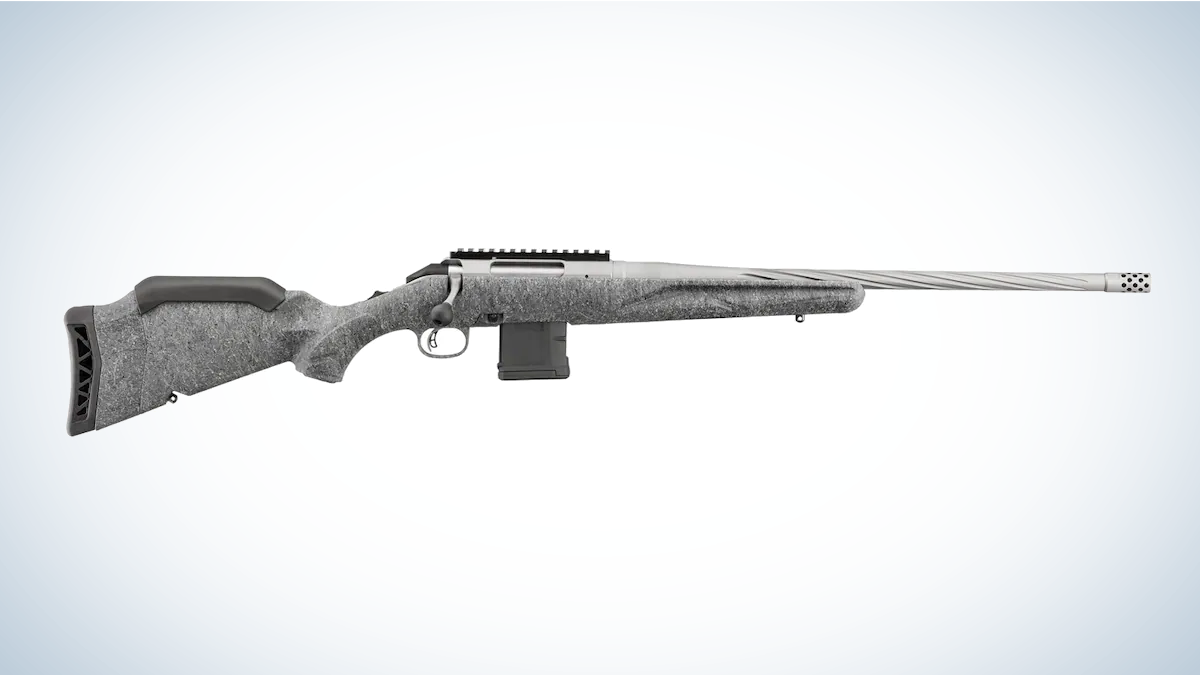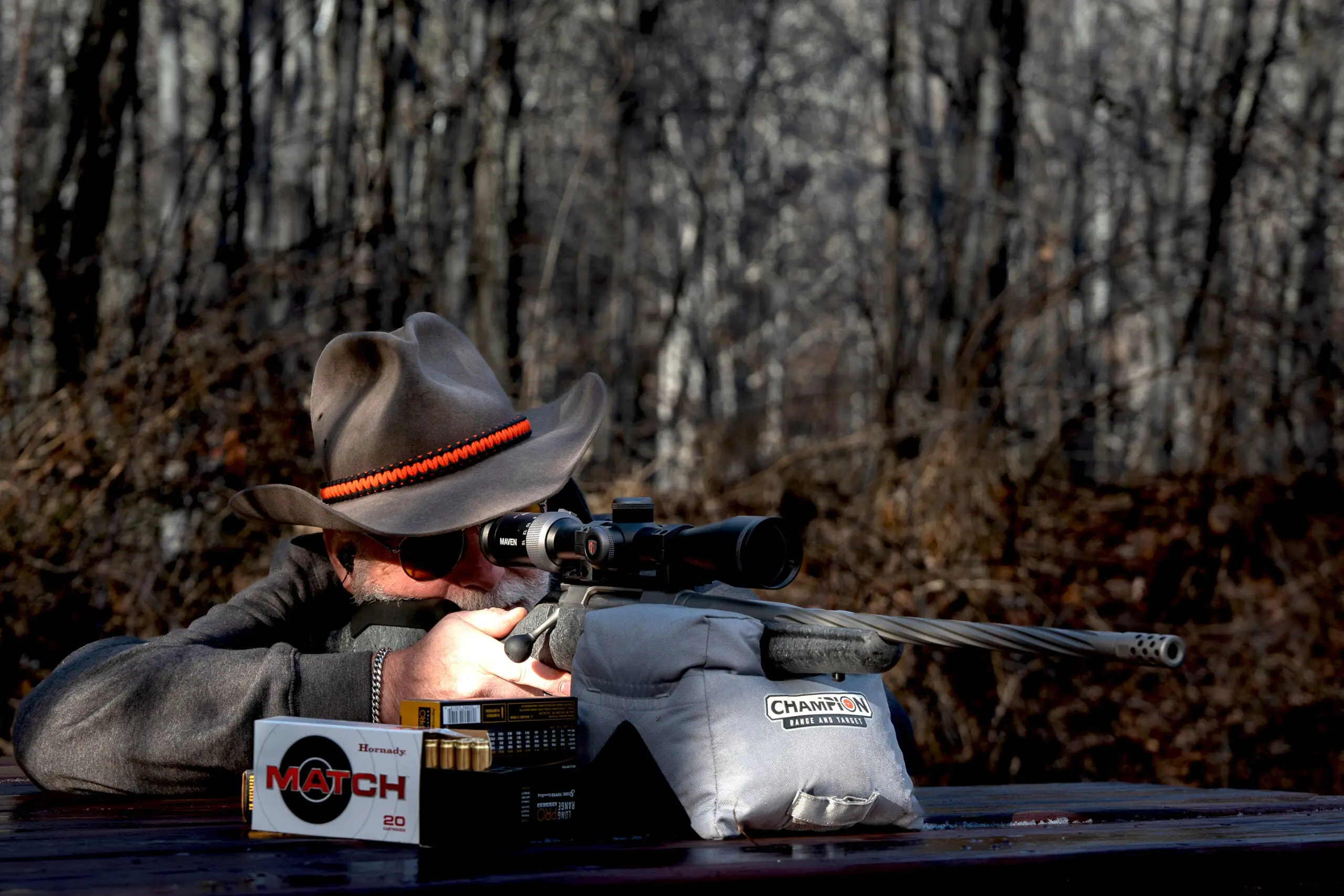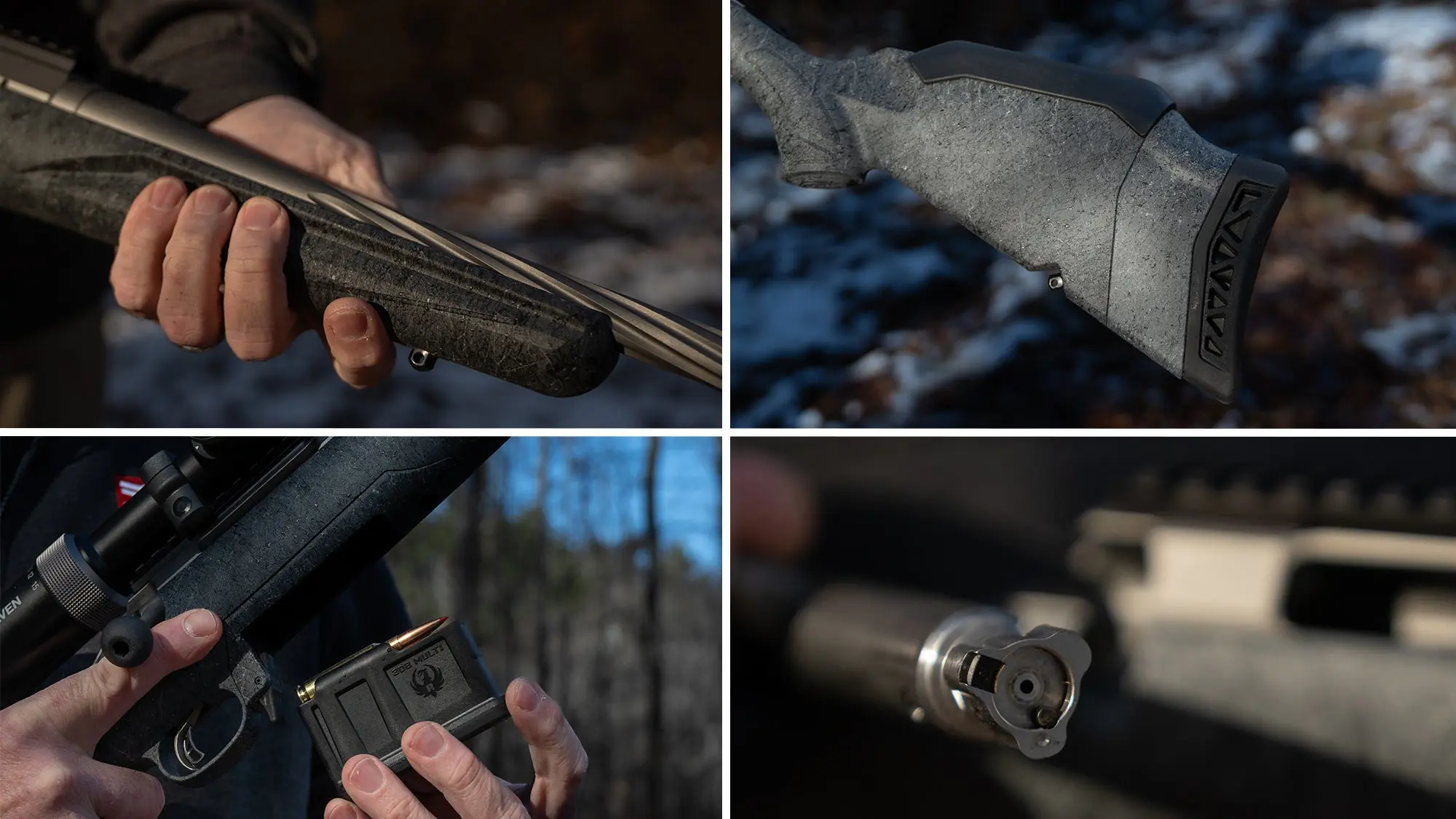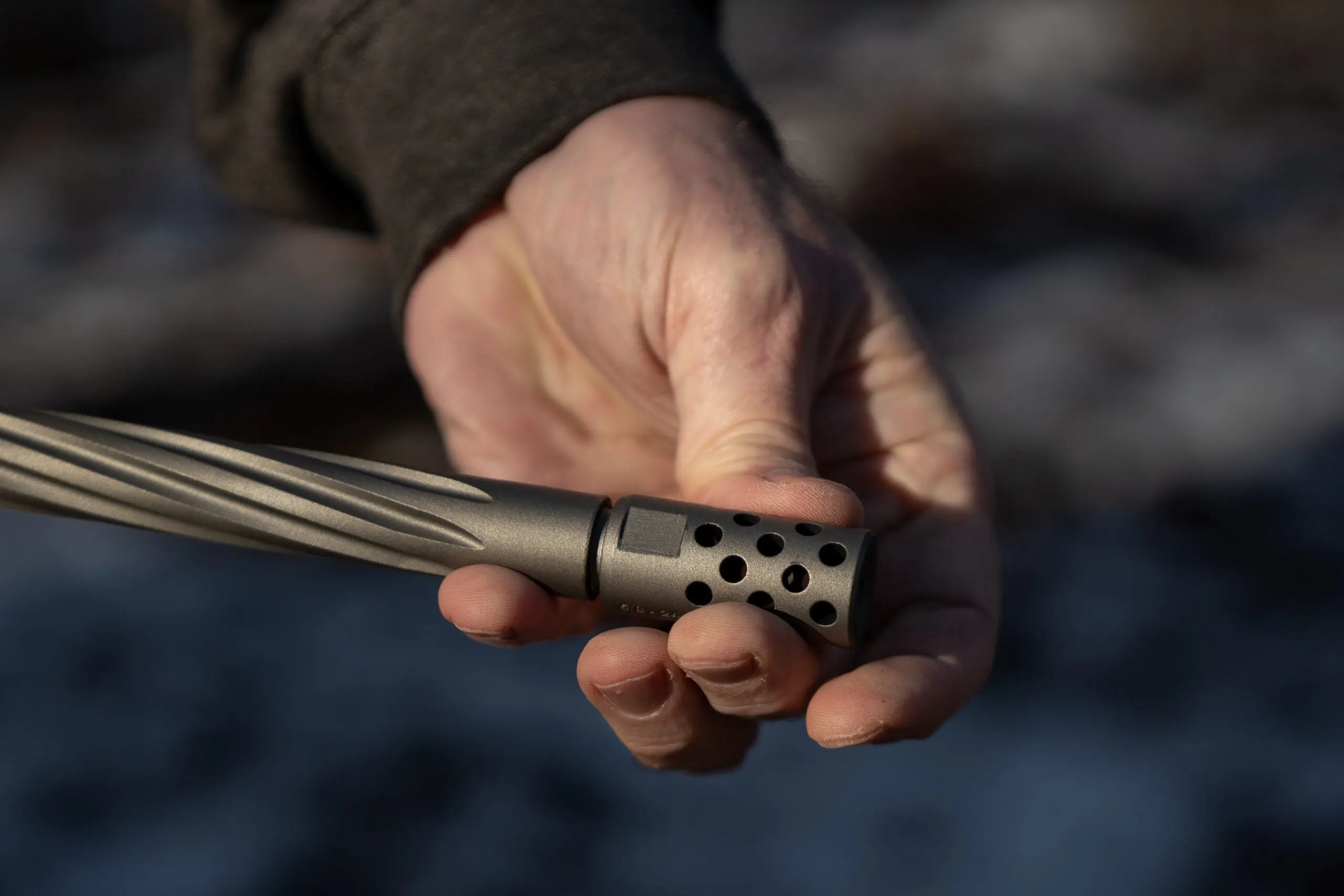_We may earn revenue from the products available on this page and participate in affiliate programs. Learn more ›
_
When Ruger introduced their American bolt-action rifle in 2012, it had a suggested retail price of only $449. It was not a lusciously blued, wood-stocked rifle, but it did epitomize the true spirit of modern American firearms manufacturing, which is to offer a high performance firearm at an affordable price. To say the Ruger American rifle was a success would be a wild understatement. Currently, Ruger offers seven variations of the rifle
. So why do they need another? Because with the Gen II, Ruger wanted to take the original American to another level. And they have.
Lately it seems everyone wants to reimagine everything, and while I’m not sure that’s always a good idea, it is essentially what Ruger has done with the American Gen II
and you can’t argue with the results. Aside from the base action and Ruger’s patented Power Bedding system, this latest Ruger American is full of new features, from the butt pad to the muzzle. In fact, when this rife catches your attention on the shelf at your local firearms emporium, you might not even recognize it as a Ruger American. But when you pay for it and shoot it, you will.

Ruger American Gen II Overview

The author on the bench, testing the Ruger American Gen II for precision. Sabastian “Bat” Mann
The most noticeable difference in the Gen II American is the stock. It’s also polymer but has a “splatter finish” and a distinctly a different shape. The forend is deeply inset, and it and the grip have raised panels to assist with a secure hold. The comb is high to aid with eye alignment while maintaining a good cheek weld and has negative drop, meaning, the comb is lower at the nose than at the heel. The comb is also modular and other attachable combs of varying heights will be offered as accessories.
There is a lot of drop beyond the rear of the comb to allow for the thick and soft rubber recoil pad to find as much contact with your shoulder as possible. The length-of-pull is adjustable from 13.75 inches to 12 inches by the removal of a single 1.75-inch spacer, and there’s a sling swivel stud located on the bottom of the forend and another along the belly of the stock. But the rear stud sits at a forward angle inside a cutout. One of the most interesting aspects of this stock is that a weight kit of up to 1.6 pounds can be added to help establish proper rifle balance when a suppressor is being used.

Clockwise from top left: The Gen II’s spiral-fluted barrel and grooved forend; raised comb and recoil pad; three-round detachable polymer magazine; and American three-lug bolt. Sabastian “Bat” Mann
The rifle uses the American action that many are familiar with, and it rests on Ruger’s patented Power Bedding System within the synthetic stock. The deeply spiral-fluted, free-floated, 20-inch, cold-hammer-forged barrel tapers from 1.15 inches to 0.725 inches, where the 5/8”x24 muzzle threading begins. Out of the box the barrel is fitted with a radial port muzzle break, and a thread protector is provided.

The Gen II comes with a radial port muzzle brake and thread protector. Sabastian “Bat” Mann
Ruger’s Marksman Adjustable trigger is standard, as is the 70° bolt throw and a bolt handle that is threaded at 5/16”-24 to allow for different knobs to be attached. The fire-control system features a three-position tang safety that locks the bolt in the rear position; a 14-slot Picatinny scope rail comes mounted to the action; and the rifle feeds from a detachable polymer magazine. The standard magazine holds three rounds, but a 10-round version is optional for rifles chambered in 204 Ruger and 223 Remington.
Ruger American Gen II Specs

Length: 41.25 inches
Weight: 6 pounds, 7.4 ounces (actual)
Barrel: 20 inches, cold hammer forged, 5-grooves, RH twist, threaded at 5/8”x24
Action: Bolt action, with three lugs and a 70° throw
Trigger: Ruger Marksman Adjustable (4.0 pounds as tested)
Capacity: 3+1 (10+1 in 204 Ruger and 223 Remington)
Finish: Gun-metal gray Cerakote
Stock: Synthetic stock, with adjustable LOP, modular comb, optional weight kit
Chambering: 6.5 Creedmoor (tested), 7mm-08 Remington, 308 Winchester, 450 Bushmaster, 204 Ruger, 223 Remington
Price: $729
Ruger American Gen II Test Results

The Gen II shot its best five-shot group of 0.87 inches with 140 Grain Federal Fusion ammo. Sabastian “Bat” Mann
For testing the Gen II, I mounted a Maven RS 1, 2.5-15X 44mm riflescope
to the factory rail with Leupold Mark 4 steel rings
. After a zero adjustment, I took the first five shots using Browning’s 120-grain BSX Solid Expanding load, and they clustered into a group measuring 0.90-inch. The next two five-shot groups with that load were even smaller, averaging 0.86-inch. I tested two other loads, and overall, the rifle averaged 0.99-inch for nine, five-shot groups. Keep in mind this is a seven hundred dollar rifle!
Ballistics and Precision Chart

After testing for precision from a bench, I did the rest of my shooting from practical field positions and found that I interfaced well with the rifle. The trigger was very nice with minimal overtravel, and the stock was comfortable. The high comb helped with maintaining a good check weld and was definitely appreciated. The muzzle break was not. It reduced recoil but was loud as hell, of course. I screwed it off and contemplated throwing it away. I then split the firing of the next 100 rounds between shots without the break and with a suppressor. I would have really liked to have had the weight kit to see how it could be used to counteract the suppressor to reestablish proper balance, but it was not supplied with the rifle.
I did not have any stoppages or malfunctions with the rifle, but there are several things deserving mention. The magazine is not drop-free; after pressing the magazine release located just forward of the trigger guard, you’ll need to pull the magazine—with only minimal effort—from the stock. Also, to seat the magazine—if the bolt is closed—you’ll have to give it a little slap to activate the latch. There was also some minor binding of the bolt, but nothing that could not be overcome with reasonable force. The forend is a bit flimsy and though the barrel is free floated, I could torque the stock into contact with the barrel if I slung up tightly with a shooting sling. That said, these are fairly minor quibbles, especially given the price.
Final Thoughts on the Ruger American Gen II

The author fires the Gen II from the kneeling position. Sabastian “Bat” Mann
Pros
Sub-MOA performance
Versatile and modular stock
Three-position safety
Great value
Cons
Binding bolt
Limber forend
In the end, you have to hand it to Ruger for building a sub-MOA rifle retailing for right at $700—and for getting serous about shooter interface with the American. They used a good trigger, provided a length-of-pull option, and understood that a high comb is necessary, especially with the large-objective scopes so popular today. They also wisely configured negative drop in the comb. This allows the comb to just slide along your cheek during recoil as opposed to hammering into it. And finally, the 70° bolt throw should not interfere with riflescopes that have a large ocular housing, or a magnification throw lever.
I did not mind the fact that the magazine did not drop free. In fact, on a hunting rifle, I’m not so sure it should. I think this drop-free idea has carried over from military or law enforcement applications where it makes more sense. If you lose the magazine to a Ruger American Gen II, it’ll be because you were the fool who laid it down somewhere and forgot it. As far as the limber forend, if you’re only pulling down on it when tightly slung up—like you should be—you’ll not have a problem. My biggest complaint was with the bit of bolt binding, but a bit of oil smoothed it out, as I expect use will as well.
This is an attractive rifle and a well-thought-out addition to the Ruger line. And it’s a bargain, to boot. It should move off dealer’s shelves quickly, so if you see one, and want it, you better grab it while you can. It’s well worth the additional $130 over the current, standard model Ruger American
. Ruger is also offering a Ranch version of the American Gen II rifle that has a 16.4-inch barrel and will be chambered for 5.56 NATO, 300 Blackout, 7.62×39, and 450 Bushmaster.
![Field & Stream [dev]](https://images.ctfassets.net/fbkgl98xrr9f/1GnddAVcyeew2hQvUmrFpw/e4ca91baa53a1ecd66f76b1ef472932b/mob-logo.svg)





